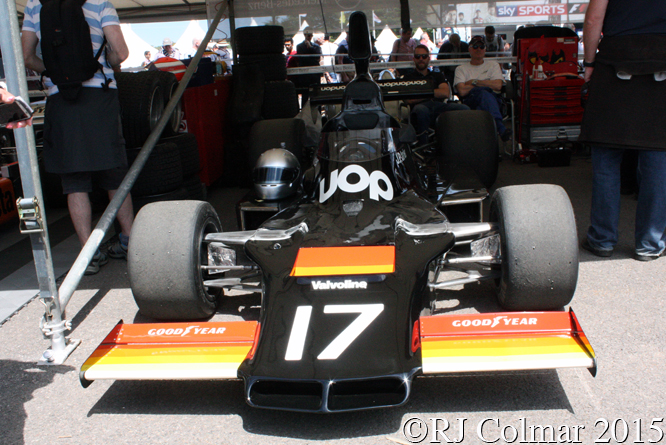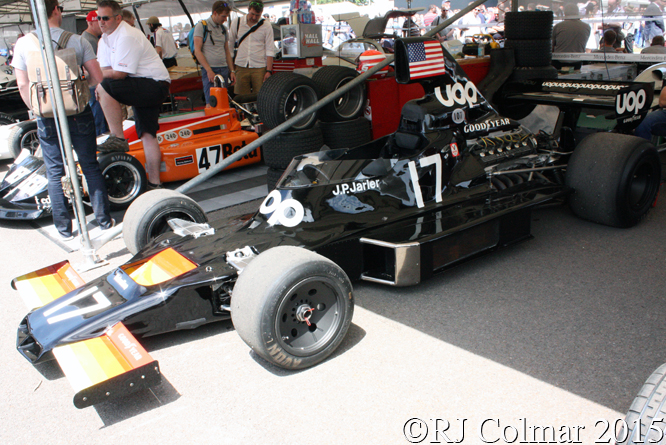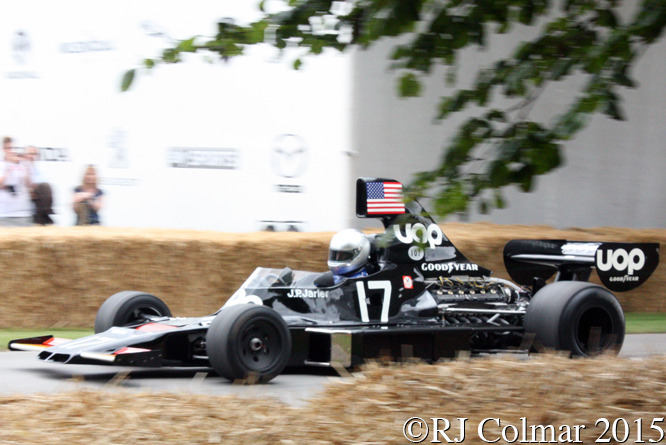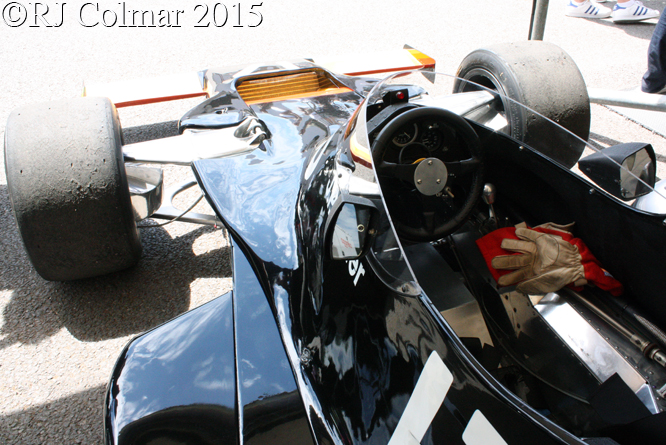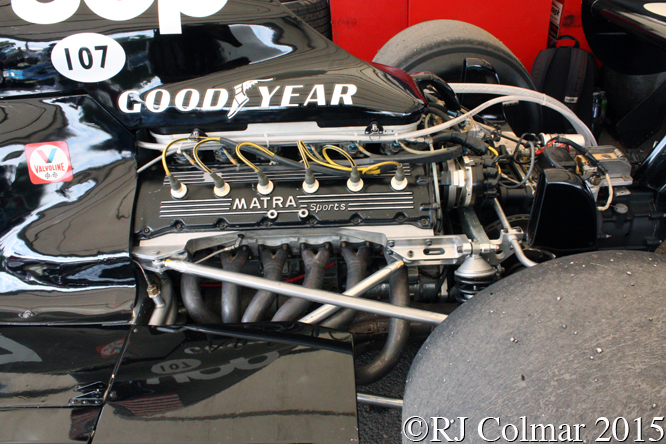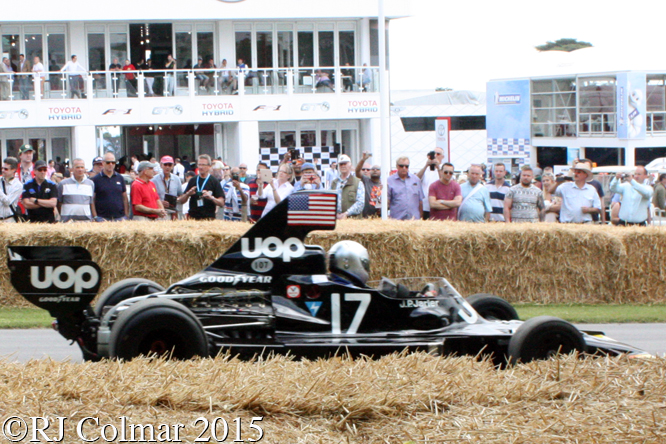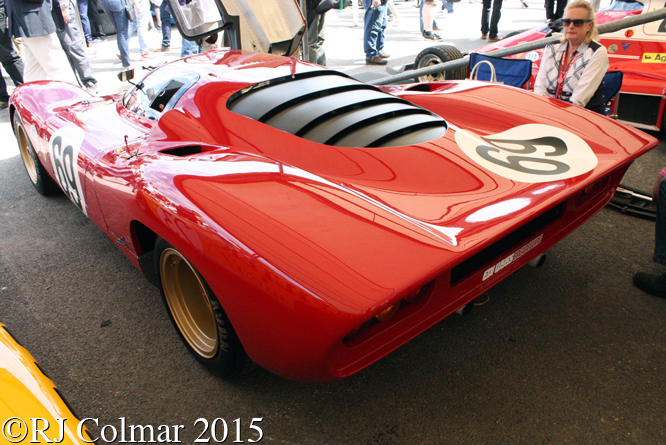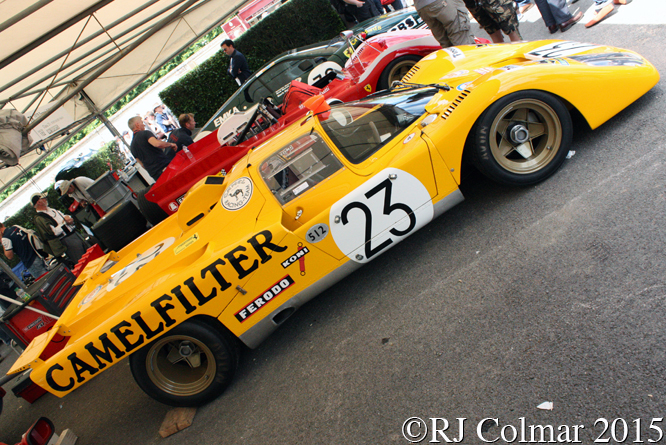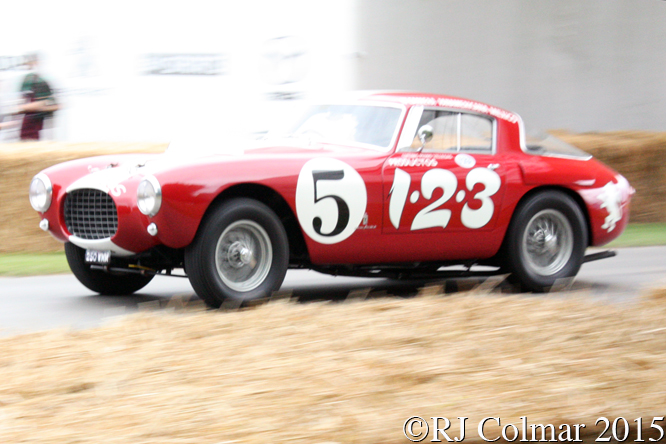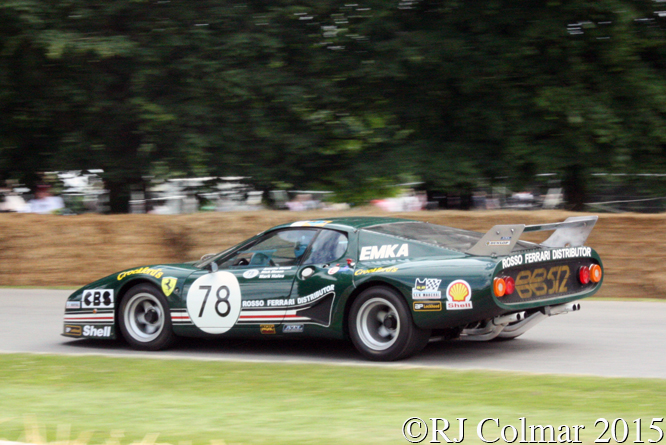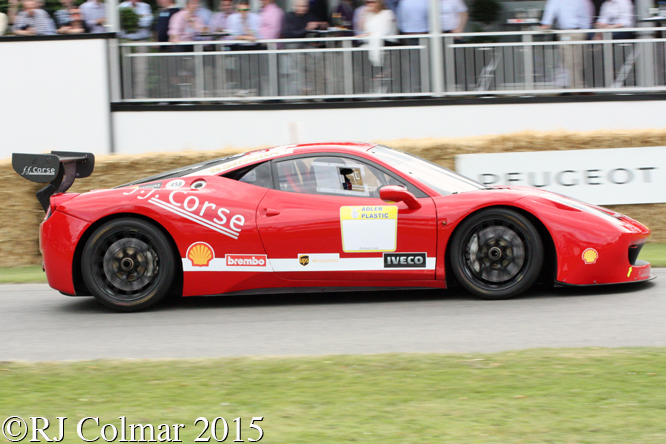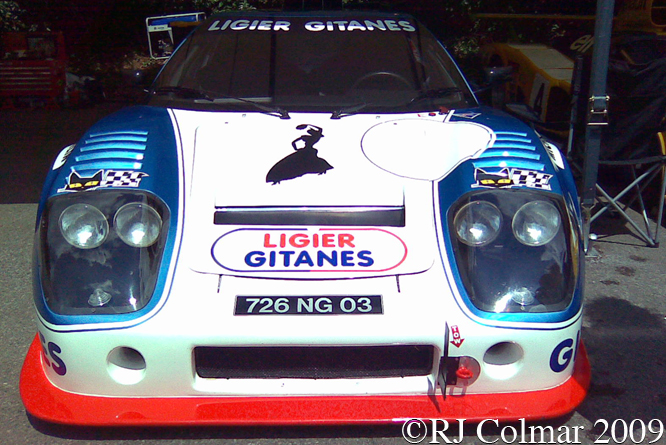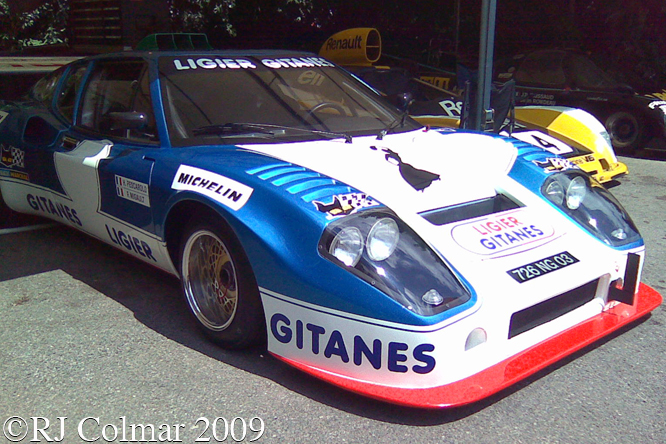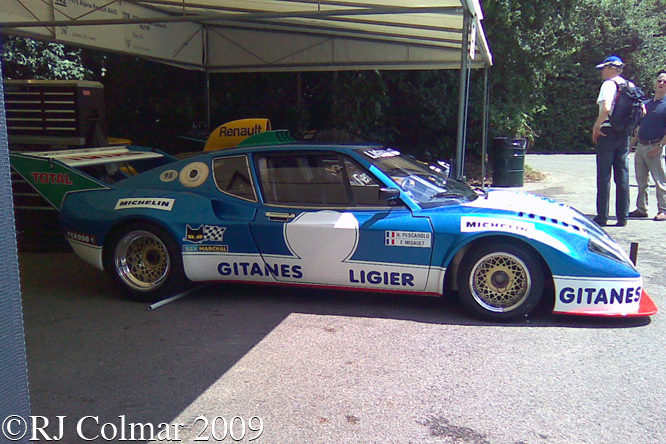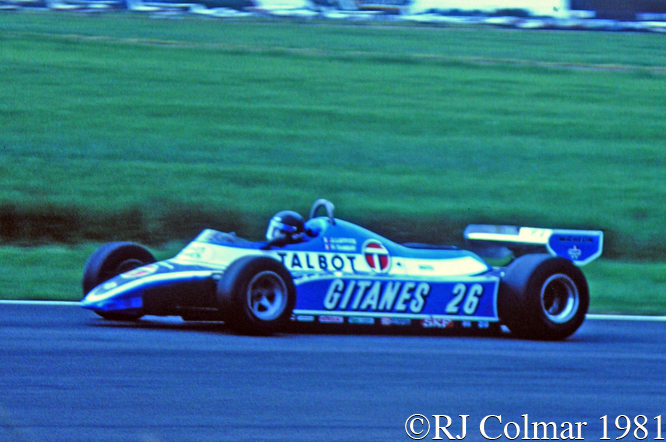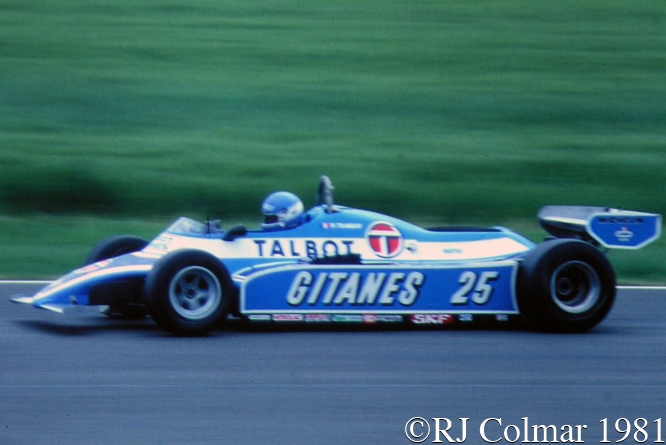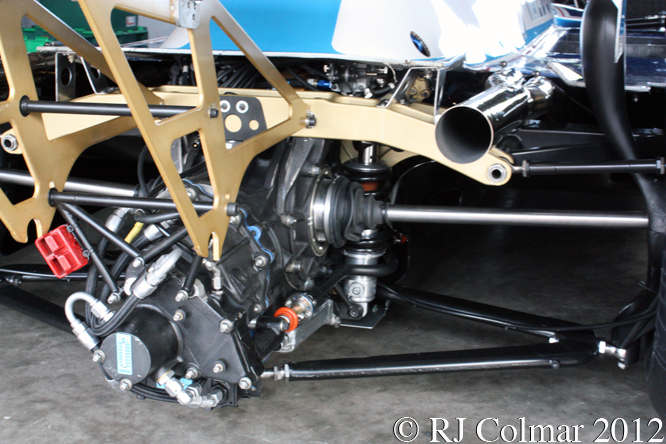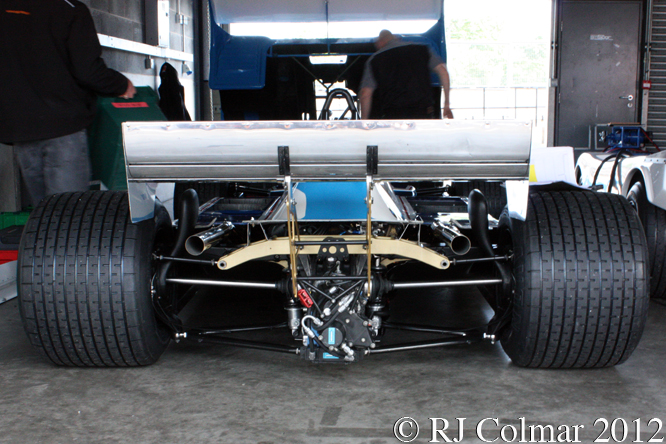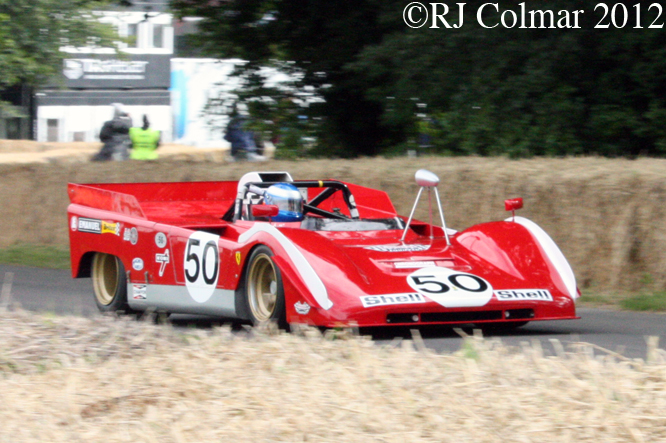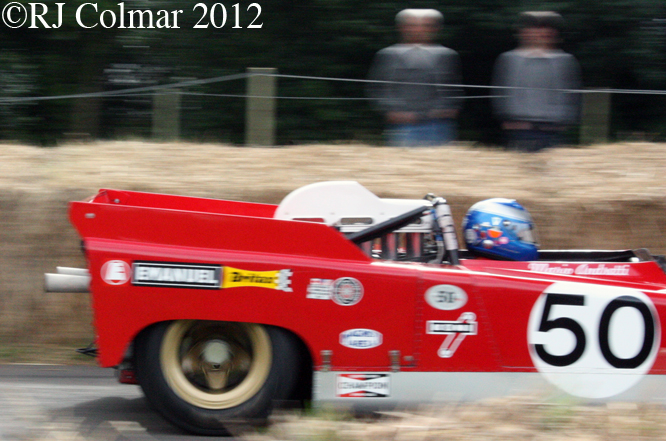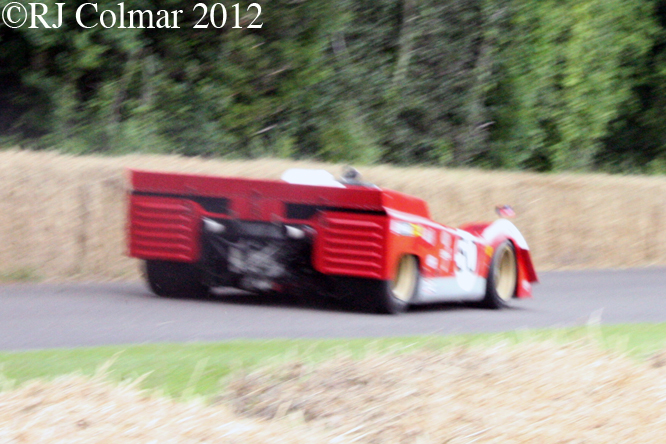Things were looking up for reigning Can Am Champions Don Nichols Shadow team in 1975, the Can Am series folded, but the team kept a strong US presence with a Dodge powered DN6 Formula 5000 team which used a similar Tony Southgate designed chassis to today’s featured DN5 design.
Following the dominant trend in F1 design the DN5 was built around a slimmer lower monocoque, than the previous years DN3, but with a longer and wider wheel base and track than many.
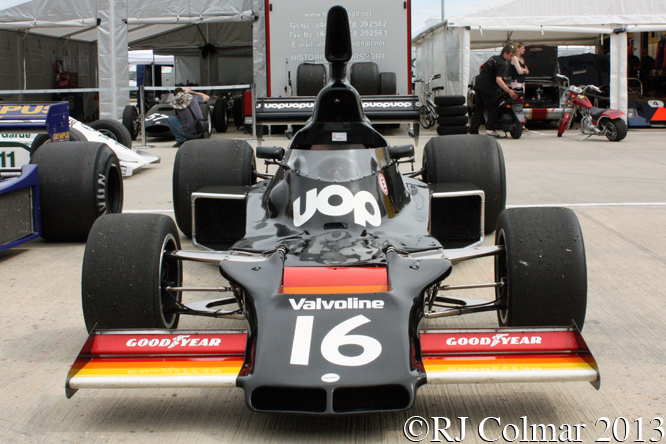
Jean Pierre Jarier put the DN5 #DN5/1A, seen here in the first third and sixth photographs at Silverstone Classic 2013, on pole on the cars debut in Argentina, but the car never started having stripped the crown wheel and pinion in the gearbox on the warm up lap.
Jumper was on pole again at the 1975 Brazilian Grand Prix, but retired seven laps short of the finish after the fuel metering unit failed.
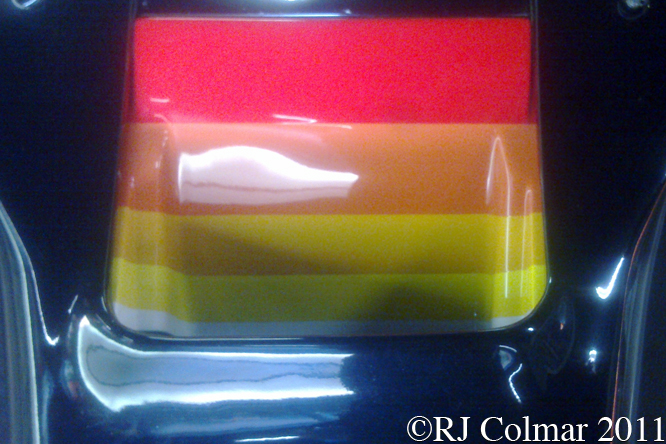
The non championship Race of Champions at Brands Hatch saw the DN5’s run with a new TV test card like colour scheme and Tom qualified the sister #DN5/2A, seen in the close ups at Donington Park Museum, on pole and then ran away with the race while Jean Pierre finished 4 laps down from 3rd on the grid classified 8th with a fuel pump issue.
Further highlights of the season came in Spain where JPJ finished a season high 4th from 10th on the grid and at Monaco where still driving the two original chassis Tom and JPJ qualified 2nd and 3rd respectively, but both retired with accident damage which would be the final appearance of JPJ’s #DN5 1A.
At the British Grand Prix run at Silverstone Tom won his only career championship pole but retired after an opening lap accident, by now having scored two 6th place finishes in Belgium and Holland.
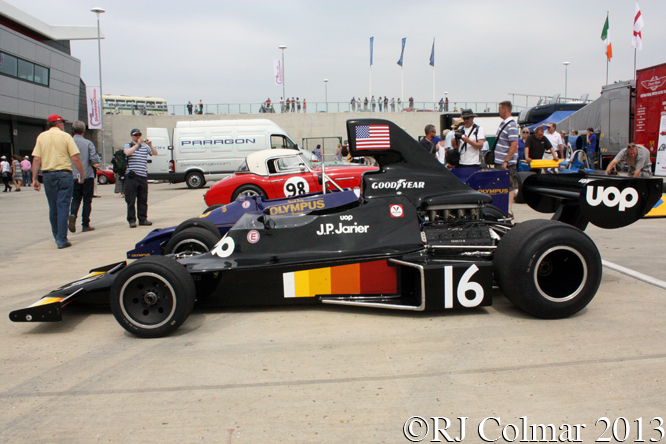
In Germany Tom still driving #DN5/2A converted 16th on the grid to a fourth place finish.
Meanwhile keen to find another engine supplier the similar Shadow DN7 with a V12 Matra engine, which I looked at a couple of weeks ago, had been built up for JPJ to drive in Austria and Italy.
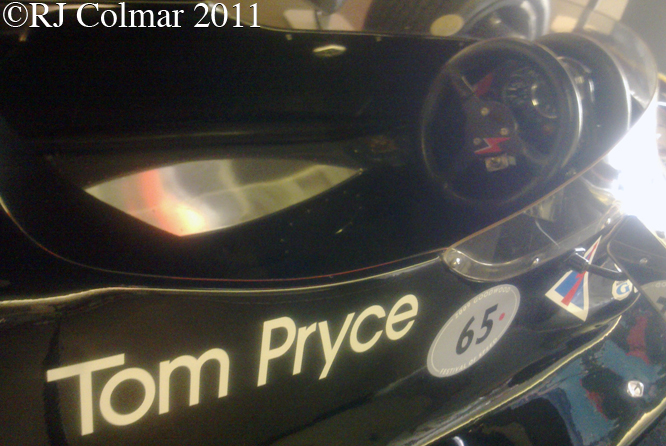
While the Matra proved not to be quite the fillip to the team’s fortunes that were anticipated Tom drove #DN5/2A to the teams season high 3rd place finish in Austria from 15th on the grid.
At the non championship Swiss Grand Prix run at Dijon in France JPJ was once again on pole with the Cosworth powered #DN5/4A, Jumper looked like he was going to break his F1 duck, until the 34th lap from 60 when the transmission broke and he retired from the lead.
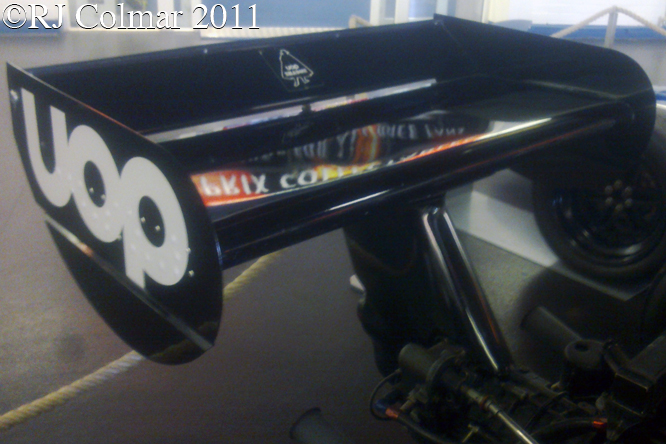
At the Italian Grand Prix Tom once again drove through the field coming home 6th from 14th on the grid.
#DN5/2A’s final appearance came at the 1975 US Grand Prix where Tom qualified 7th but finished unclassified 7 laps down.
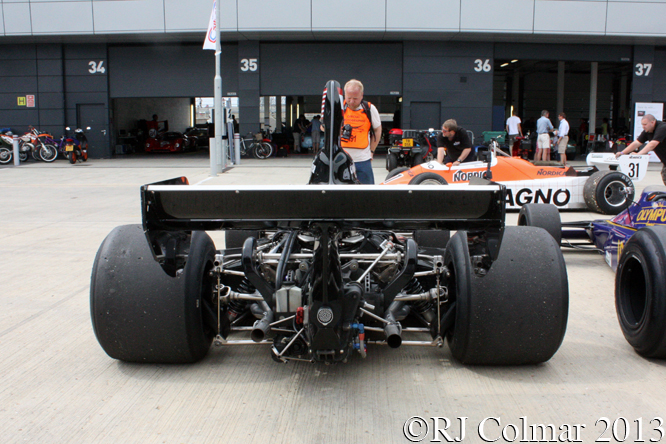
Having failed to convince Matra of their suitability as a partner for the 1976 season Shadow also lost their sponsor UOP meaning Tony Southgates new Shadow DN8 was put on hold while the team continued running the DN5’s in B spec, which I shall look at next year, that was introduced to meet new regulations from the Spanish Grand Prix.
Thanks for joining me on this “Pole Sitter & Sister” edition of “Gettin a li’l psycho on tyres” I hope you will join me again tomorrow for Maserati Monday. Don’t forget to come back now !


